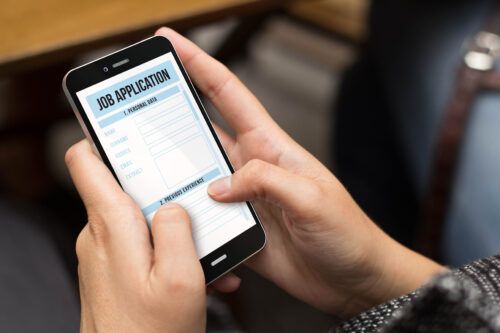Have you had any experience of delivering a presentation at an interview? How do you prepare? How do you engage your audience?
Presentations are a common part of the recruitment process for graduate, research, teaching, consulting and other professional roles across a range of sectors.
Whether you have had a lot or limited experience in delivering presentations through university or work, you might find the tips below useful when preparing for the next steps in your career.
Purpose of having a presentation at an interview
The employer wants to see evidence that you can do the job and evidence of your written and verbal communication skills, which we will cover in detail in the points below.
Notice of a presentation at an interview
It is usual to have at least 3-5 days advance notice on the content of your presentation, usually, you are notified via email or the recruitment portal. If the interview is held at an assessment centre, candidates might be told on the day that they are required to present and given the brief.
Presentations usually last 5 – 15 minutes and are often the first part of the interview process i.e. before a one-on-one or panel interview.
Understanding the brief
It is imperative that you are clear on what you have been asked to do. Always revisit the task and contact the employer if you have any questions. Sometimes you may be expected to present to the interview panel as if they were clients/students/colleagues etc. Examples of presentation tasks can include addressing how you would carry out one or more aspect of the role; a timeline of how you would spend your first few weeks or months in relation to a project; a strategy for engaging with multiple stakeholders, managing a budget or building a brand.
Think carefully about the task and how it relates to the job description and person specification. This is another opportunity for you to demonstrate you are a suitable match for the role. Consider the questions below:
- What do you need to address?
- How long have you got to present?
- Who is your audience?
- Where should your focus be?
- What research is involved?
- What is important to the employer e.g. skills and strategy?
Verbal communication – tone and speed of voice
Be aware of how you are perceived during your presentation, do you use different tones of voice when speaking? Consider the subject matter and how your voice can convey the correct message. By practising your presentation, you are more likely to come across as confident in the delivery. Avoid relying on cue cards or simply reading text off a document or screen. Speech anxiety in this situation is common, but most of what we feel during this period is not usually visible to the audience.
Examples of nerves include shaking, a dry mouth and an increase in body temperature. We can often speed up the pace we are presenting at as a coping mechanism – rushing through the content for it to be over for example. We must learn to recognise if we are speaking too fast or our words are mumbled. Pauses during the presentation can be a great way to gather our thoughts and give a moment for everyone in the room to process what has been said.
Time management
Your ability to deliver your presentation within the allocated time limit says a lot about you. This shows you are organised and can complete tasks in a timely manner. The planning and preparation you put in beforehand will be helpful here.
Non-verbal communication – connecting with the audience
Whether you are presenting to two people or a larger audience, you need to find ways to connect with them. How many people are expected to be present and who are they? Think about your facial expressions, gestures and posture. Looking at individuals in the eye, smiling and having open body language can help to make the audience feel relaxed and you come across as more approachable.
Written communication – visual aids
Be mindful of the type of organisation you are applying to when preparing your resources – colours, logo, values and strategy. Ensure that if you are creating a PowerPoint presentation, the colours do not clash and that you do not include too much text on your slides. Think about the use of suitable images or charts.
Be confident when using this Microsoft Office application and save several versions of it on a USB and email it to yourself in case technology fails you when in the interview room. Remember that the audience can read everything on the slides very quickly. Use the slides for key points and keywords as prompts to lead you.
Handouts can also be useful as the interviewers will refer to this for more detail on the task.
Ensure your spelling, punctuation and grammar are correct. Avoid the use of Americanisms for non-US companies. Think about the language used and the role you are going for. Visit the organisation’s website to gain a further understanding of what type of employee they are looking for.
Dealing with the unexpected
Be prepared to adapt your presentation delivery style if the reality does not meet your expectations. Examples of this include the size of the audience, room and technical issues. It is important to not get stressed or look as though you are under pressure. Try to remain calm and positive as these are qualities employers look for in most roles. Have a plan B for your presentation delivery in case something does go wrong.
Questions
Always be prepared for questions at the end of your presentation. Individuals will have queries or want to make comment on specific content. Be open to these questions and any constructive feedback and respond in a professional manner. By giving yourself enough time to prepare your presentation, you will have the confidence to articulate your strengths and ideas.
Checklist
Here is a checklist to use when preparing for your next presentation at interview
- Seek clarification on what you must do
- Identify your audience
- Get confirmation on the use of technology in the room
- Revisit the job description and person specification
- Spend time planning your presentation
- Practice your presentation in front of others
- Take a course or watch a webinar on confidence building, presentation skills or public speaking
- Speak to a career professional or mentor about dealing with nerves
Remember…
You made a good impression during the application stage of the job and got shortlisted because the employer wants to meet you and hear about your strengths and ideas. Spend enough time preparing for your presentation so that you can demonstrate why you are suitable for the role.





Thank you for your kind advices
Thank you for this insight. I shall refer to this in my preparations. It will help me adapt my skills appropriately.